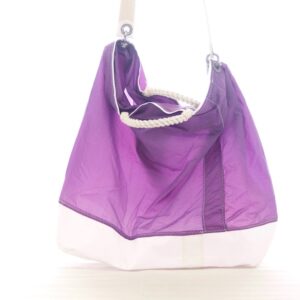- recycled spinnaker
- amovible pocket inside closed with zipper
- spinnaker pochette
- amovible cotton/cellulose pulp handles
- recycled spinnaker shoulder strap
- steel stainless shackles
- size: cm 43×53 high cm
- washable at 30°
Relations de voyages guarantee that this bag is entirely made of with recycled sail: spinnaker, which was washed from its impurities.
Each bag is unique. The bag that you will choose in the photo is exactly the bag you will receive.
Possible irregularities are not manufacturing defects but testimonies of the “real-life experience” of the sail, which return this a unique and authentically recycled accessory








